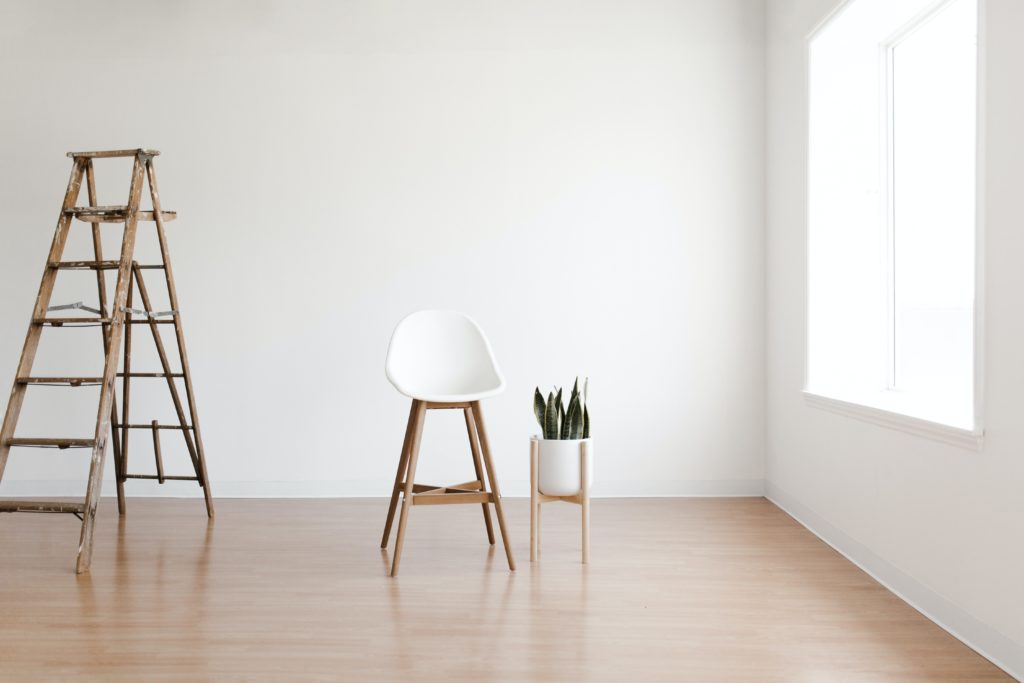Renovating your home is a major undertaking that requires both inspiration, creativity, and careful planning. It’s not just about deciding what changes are necessary or what colour palette you should choose for your walls, but also about figuring out the right sequence for handling all the tasks involved in the process. If you get the order wrong, you risk compromising all the work you’ve completed up to a certain point. Get it right and you’ll be able to enjoy a smooth and hassle-free home remodel, and even have fun while you’re doing the work.
Sometimes, it’s quite obvious how things are supposed to happen. Other times, it can be a bit more difficult to decide what steps you should take first. And that brings us to one of the most common dilemmas people face when they take on a major home renovation project: what comes first – the floors or the walls? Since both refinishing or laying floors and painting the walls play a major role in the renovation process, you need to get your priorities in order before breaking ground. So, if you’re still going back and forth on this issue, we’ve got a few useful tips and some aspects to consider that can help you find an answer to this question.
Doing the floors first
So, you’ve decided that it’s time to give your floors an update and you’re thinking about refinishing your old hardwood floors or you want to start with a clean slate and lay a new vinyl flooring. Regardless of the option you choose, you have to make sure you schedule your flooring project at the right time. Starting with the floors instead of the walls comes with a series of perks, but there are also certain disadvantages to take into account, so let’s take a look at both sides of the coin.
The pros
It’s the floors that set the tone for your entire space. Since they weigh so heavily in the design of your home, it’s often recommended to start with the floors first and then move onto the walls. It’s also a lot easier and makes more sense to find a colour that will match your existing floors than change the flooring to suit the colour palette you’ve chosen for the walls.
If you’re worried that the dust from sanding will damage your freshly painted walls, it’s obviously a good idea to do the floors first. Then, if you’re careful when painting, you can keep both your floors and the walls in perfect shape.
The cons
Accidents can happen when painting your walls, and the last thing you want is to have your perfect-looking floor covered in paint drops at the end of the home renovation project. There are ways to prevent this from happening, such as choosing a paint sprayer that minimises the risk of spillage, but you still won’t be able to paint freely as you would if the floors weren’t a concern.
If you do decide to take care of the floors first, you’ll have to make sure they are covered properly before you start your painting job, or use a chemical floor protectant. That will obviously require further investment and add another task to your already interminable to-do list.

Doing the walls first
A different course of action would be to paint the walls first and leave tasks such as sanding or installing flooring laminate last. Giving your walls a brand-new look is certainly one of the easiest and most effective ways to breathe new life into your interiors, whether you choose to paint them, add wallpaper or change their texture.
The pros
Painting the walls or covering them with wallpaper can change the feeling of a room in an instant. If you already have everything planned out in your mind and know for sure that your new walls and floors will go together perfectly, there’s nothing stopping you from giving your walls the TLC they deserve first.
Doing the walls before the floors means you don’t have to worry about paint splatters, especially if you’re planning to sand or re-stain them, as any marks can be removed later. So, you can just paint away without watching your every step. The same goes for the damages that may be caused by painting tools and equipment.
The cons
If you want to install new hardwood floors, you should be aware that things can get pretty messy. The dust resulting from the sanding process can severely damage newly painted walls, which is why it’s best to do things the other way around.
In some cases, paint spills can be very problematic. That usually happens when darker-coloured paint is splattered on raw wood. Getting the stains out is going to be extremely difficult, even if you sand the floors or use professional cleaning solutions.
In the case of sanding after painting, you have to be cautious and cover the walls in order to avoid any damage caused by dust. That’s one extra job that can cost you time and money.
Final thoughts
As you can see, there are no exact rules on how to go about renovating your floors and walls. There are both pros and cons to each approach, and the order in which you decide to handle these tasks greatly depends on the specifics and the complexity of your project.
It’s definitely something you have to prepare carefully for if you don’t want to deal with unpleasant surprises as you progress with the renovation work. Consulting with a professional is probably the safest and most efficient way to handle a project that involves renovating both the floors and the walls. An experienced contractor will be able to assess your project and come up with the best solution for you, so you don’t have to trouble yourself with these technicalities anymore.






